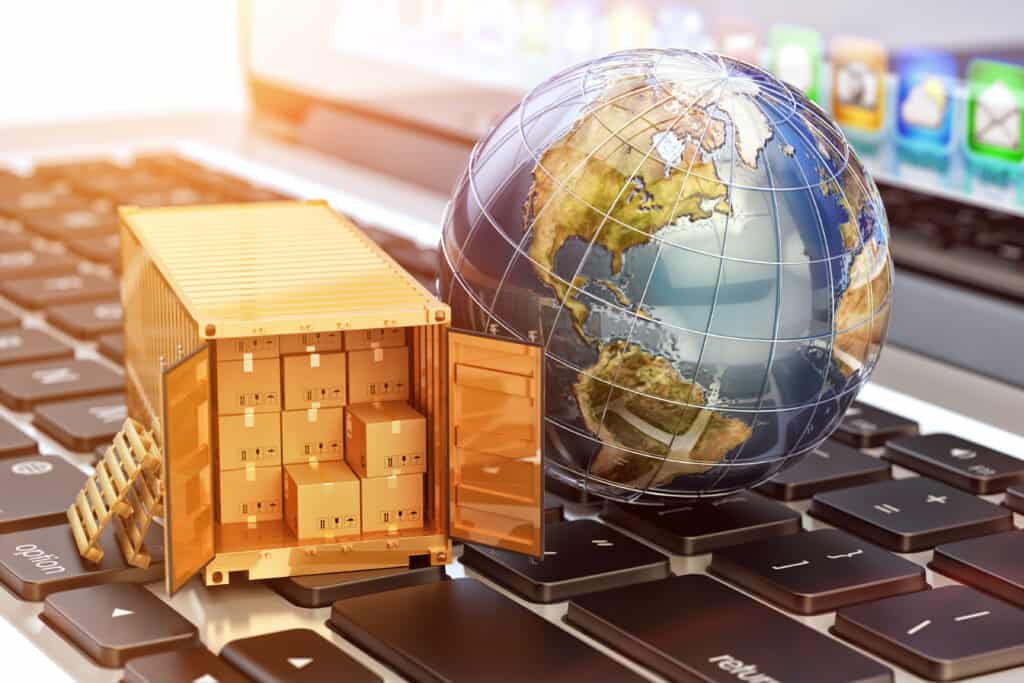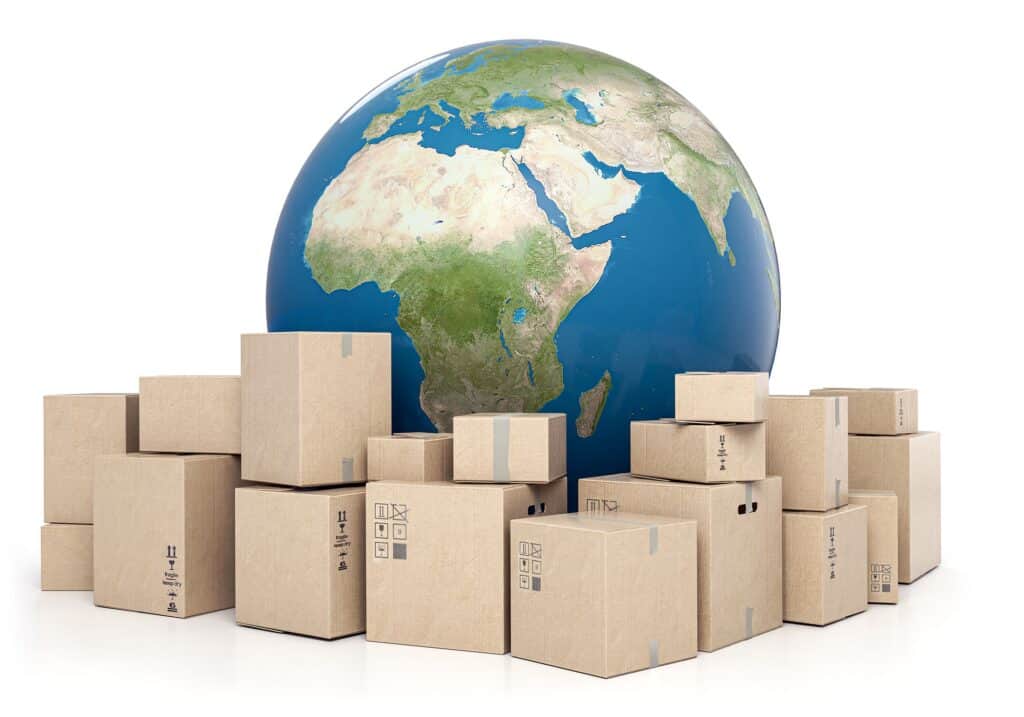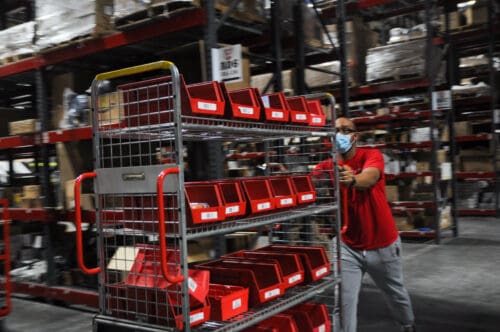If you can ship it, they will order. The logistics version of the famous Field of Dreams line may have legs given the continued rise of global eCommerce sales, but that requires having a worldwide fulfillment partner to ensure delivery for your business. All those new markets are irresistible if you’ve got the time and resources to put toward mastering a global supply chain.
If your eCommerce fulfillment strategy has proven successful in your home country, it might be time to expand and start selling to a global audience. Anyone can order from your website, so why not remove barriers to sales and have packages circle the globe? To get there, you’ll need an interconnected series of partners and experts that know the ocean and each target market. It’s challenging but something today’s eCommerce leaders can definitely achieve.

What are worldwide fulfillment services?
Worldwide fulfillment services power your business to sell to customers everywhere and ship those orders out successfully. For most companies, worldwide fulfillment is a complex web of multiple carriers, distributors, 3PLs, customs and duties professionals, and more. That’s because global order fulfillment strategies must account for different rules, taxes, regulations, and last-mile delivery in each of the cities and countries where your customers live.
If you want to drive down fulfillment costs, you’ll also need to investigate warehouses in your significant countries and markets. That increases the capital you put into inventory. But, it allows you to reach customers quickly and pay for initial imports at freight rates. For your customers, in-country warehouses improve the experience by using products that have already passed through customs and already have had duties and customs paid. Your shoppers no longer need to worry about dealing with customs. That means no settlement of outstanding costs or surprise fees.

National vs. worldwide fulfillment
Now, the difference between national and worldwide fulfillment operations is pretty apparent. National services focus on a single country and are typically entirely in-country. They often start at the point of manufacturing or when goods enter that country. They manage inventory movement to warehouses and then fulfillment to the end-customer throughout that country.
Global services help you move goods to multiple countries, often via ocean lines. In many cases, they coordinate complex cross-border activity and then hand off your inventory to national fulfillment operations to finish inventory management and order fulfillment. You can have a mix of global and national partners in your supply chain. Sometimes they’ll work together for you, and other times you’ll need to direct those efforts.
Are you an eCommerce company selling in the U.S.? Red Stag Fulfillment offers leading U.S. eCommerce fulfillment services and can collaborate with worldwide partners to keep your products moving quickly and affordably.
Now, let’s look at why you might want a worldwide partner in your supply chain mix.
5 questions to help find worldwide fulfillment’s value
Worldwide fulfillment solutions require a significant investment of time and capital. You’re trying to reach more people around the globe and need the assets, carriers, and paperwork to get it done. If you’re trying to determine if the potential for sales in new markets is worth that expense, here are a few questions to get you started on the potential path to worldwide fulfillment services.

1. Is your business already global?
Start with the simple question: how many countries are you shipping to right now? If you’ve got a variety of international orders and they’re growing, start analyzing this data deeply. Track the countries where people order from regularly and the total countries shipped to in the past year.
Look at the demand that’s there and research if this means you’ve got untapped potential in these markets. Launching a worldwide fulfillment effort can be worth it if your business already has some resources going to international orders, and you expect a positive ROI on further investment.
2. Is your supply chain resilient?
One thing that the pandemic taught us is that supply chains can be disrupted at scale. Having any single point of failure puts you at significant risk of everything grinding to a halt, which increases costs and fees as well as the potential for lost and canceled orders. Resiliency and redundancy must be your supply chain’s focus. If you don’t have this in your domestic market, it may not be time for a worldwide push.
Use the pandemic as your guide to understand how much work you need to do on your supply chain. See if it can address work stoppages or delivery slowdowns. Look for plans to address delays in production and ships stuck at port. If your current raw materials supplier raises costs significantly, do you have an alternative?
And don’t neglect the customer service elements that go along with every link and disruption. Ensure you’ve got ways to tackle concerns from customers in every country. Then, review your partners to see if you like how they treat you as the customer. High-quality service matters, and it’s one reason many of Red Stag’s partners have been able to come out ahead of the curve even during 2020 and 2021.
And we have thoughts on how to make 2022 successful too
3. Can you afford the inventory?

Rolling out a global shipping plan requires you to have some goods already on hand, plus the ability to scale production for orders. That’s a tough hill to climb — especially with COVID’s impact on inventory management — if you don’t already have a good relationship with suppliers and manufacturers.
You’ll need revenue immediately to expand stock and likely increase your minimum stock levels to avoid stockouts.
Inventory is usually the most significant capital investment an eCommerce company makes. So, expanding it to have availability across new markets is a big ask. Those costs are on top of the consultants and supply chain partners you’ll need to manage VATs in some areas and import requirements in your new markets. You may even need to find a 3PL in a major foreign market to warehouse your goods and ensure proper last-mile delivery. Again, that comes with considerable inventory investment.
4. Are your partners worldwide fulfillment experts?
Global fulfillment can get expensive when something goes wrong. Improper documentation, incorrectly assigning goods or using the wrong tariff codes, or relying on outdated tax information can result in unexpected costs and potential fines. There’s a lot of paperwork to get imports and global sales right, which usually means working with licensed customs brokers in each country.
Save yourself a headache and protect your bottom line by reviewing partners before you start pushing for global fulfillment. Ask where your customs brokers practice and how existing 3PLs can help. Review the entire export and import process to identify gaps. Ask your partners for specific help and suggestions so you can leverage their relationships and expertise. Recommendations for work — like in-country fulfillment services — can make getting started in a new market much more manageable.
Follow established fulfillment best practices for your global efforts. That includes elements like having multiple carrier relationships in each country or region, using electronic systems to track documents, assigning responsibility for time-sensitive work like filing the Bill of Entry, and assessing your packaging materials. In this case, packaging must protect products and have the correct labels to get through customs.
5. Where do you see yourself in 5 years?
The last area to look at is your projected growth. Fire up those demand forecasts and see if a truly global effort suits your potential. If markets are hungry for you, and you want to expand your business significantly, then it might be right to create a worldwide fulfillment plan.
Can you do the work, and will there be rewards to reap?
It may be helpful for you to look at both opportunities and challenges. You want to be able to capitalize on available sales while keeping these growing efforts affordable. Think about ways to tackle scaling costs — such as working with a 3PL that supports international fulfillment — and planning regional distribution points to keep up with customer demands. If the move feels too complicated, ask if you’re comfortable turning a significant portion of your operations over to third-party providers.
Go worldwide with Red Stag
Red Stag Fulfillment offers worldwide fulfillment support for multiple international eCommerce companies. These brands trust us to provide U.S. fulfillment services and support for the larger North American market. When possible, we can also make introductions to global partners and help you look for ways to streamline worldwide fulfillment practices.
Our mission is to help you have the most reliable fulfillment that exceeds your and your customers’ expectations. We aim to be a partner in your growth by taking the headache out of fulfillment and inventory management.
Every international move is different. So, give us a call directly to start talking about global fulfillment support and how we might be able to help.













